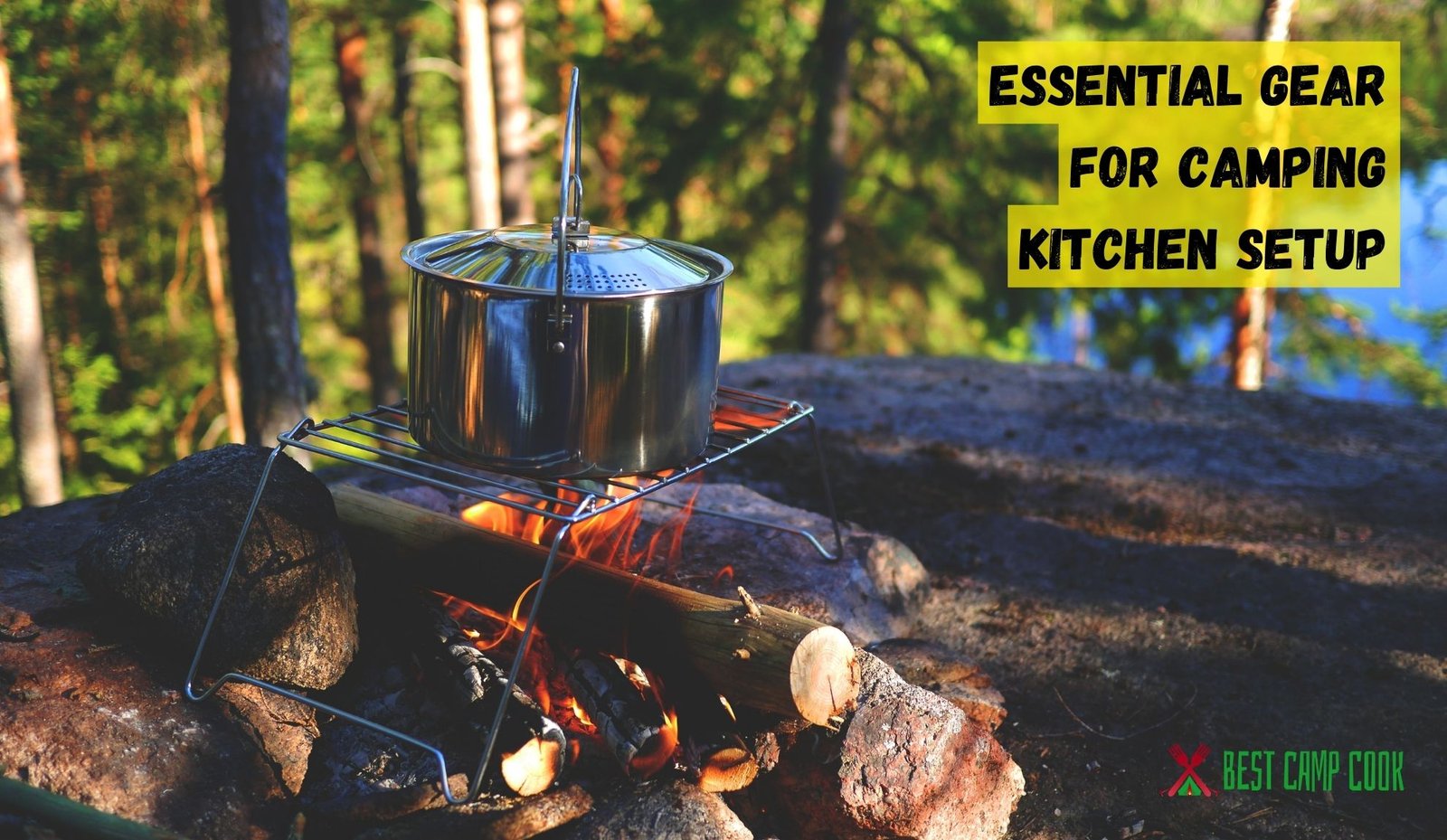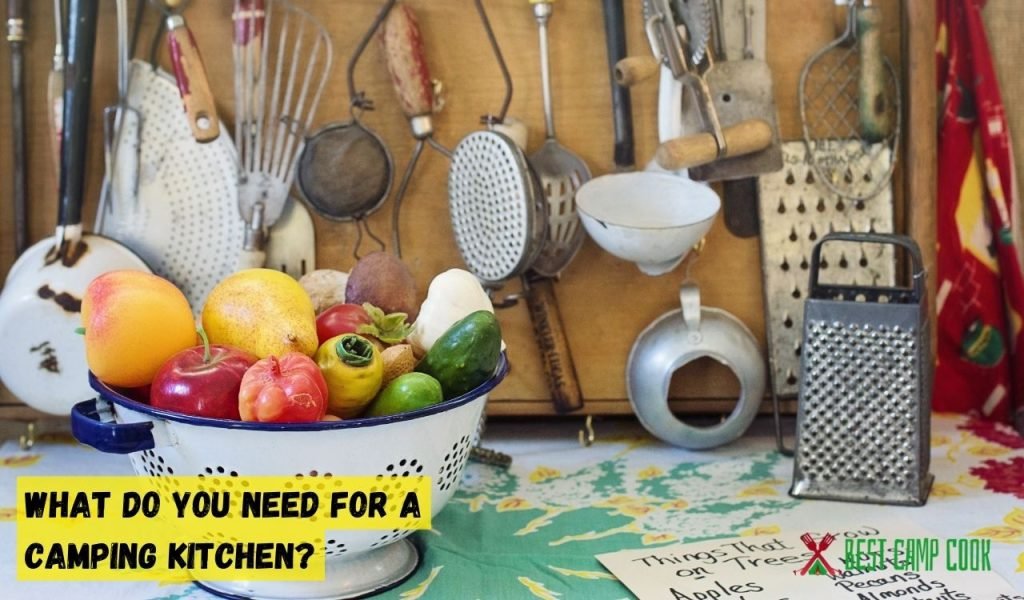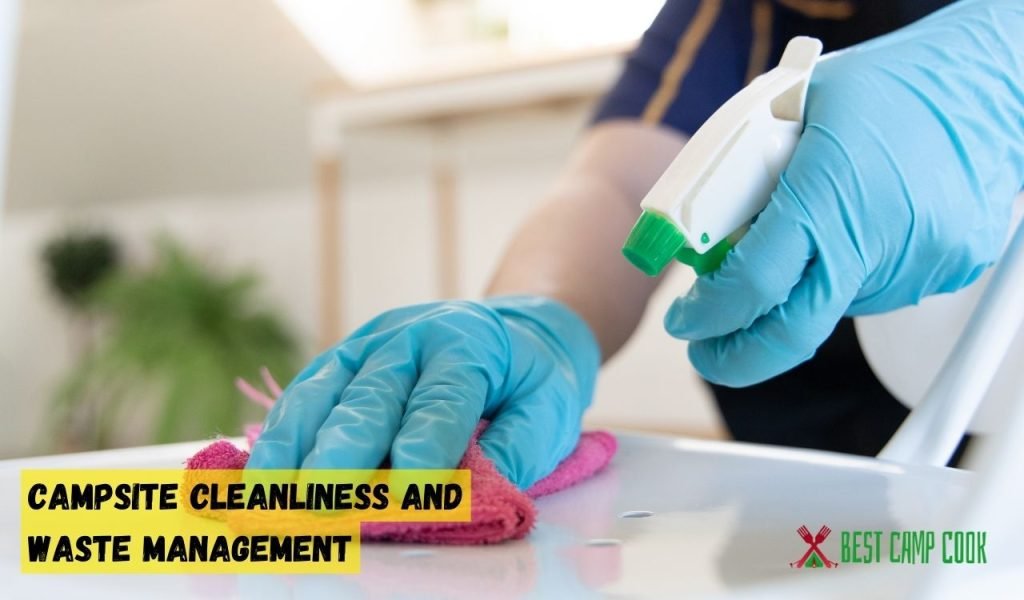Physical Address
304 North Cardinal St.
Dorchester Center, MA 02124
Physical Address
304 North Cardinal St.
Dorchester Center, MA 02124

Looking to level up your camping game? Say goodbye to basic meals and hello to epic outdoor cooking adventures! Get ready as we delve into the ultimate guide for Camping kitchen setup. From must-have equipment to pro tips and mouthwatering recipes, we’ve got you covered.
Whether you’re a nature enthusiast or a weekend warrior, prepare to elevate your culinary skills and transform your campsite into a food lover’s paradise. So, pack your appetite and let’s embark on a journey to create the perfect camping kitchen setup that will leave you craving for more!
Main Summary: Proper Camping Kitchen Setup
For the ultimate camping kitchen setup, plan meals ahead, and pack essentials like a Portable stove, cookware, grilling gear, cooler, food storage containers, cutting board, and knife. Pack non-perishable foods, fresh produce, spices, and condiments. Organize your camp kitchen with stackable storage containers.
When embarking on a camping adventure, one crucial aspect to consider is your camping kitchen setup. A well-organized and efficient kitchen can make all the difference in your outdoor cooking experience. In this article, we will explore the essentials you need for a camping kitchen, discuss strategies for organizing your camp kitchen, and delve into alternative cooking options to enhance your culinary adventures amidst nature.

Before you head into the great outdoors, it’s important to gather the necessary items for your camping kitchen. Here are some essentials to consider:
An efficiently organized camp kitchen can save you time and effort during meal preparations. Follow these tips to optimize your camping kitchen setup:
Before your camping trip, plan your meals and create a shopping list accordingly. This ensures you have all the ingredients and eliminates last-minute stress.
Designate different areas within your campsite for specific tasks. Have a dedicated space for food preparation, cooking, and washing dishes properly. This division of labor will streamline your kitchen activities.
Invest in stackable storage containers to keep your kitchen essentials neatly organized. Group similar items together and label the containers for easy access.
Create a designated kitchen box specifically for your camping trip, ensuring you have all the necessary cooking equipment, utensils, and even delicate items like eggs in one convenient location. This helps with easy transportation, prevents anything from being forgotten, and provides a safe and organized space for fragile items.
Maintaining cleanliness in your camp kitchen is crucial. Clean dishes and utensils immediately after use to avoid attracting wildlife and to keep your cooking area hygienic.
While a camping stove is a popular choice for outdoor cooking, there are alternative options that can add variety to your camping meals. Consider these alternatives:
Cooking over an open campfire is a classic camping experience. Invest in a sturdy grill grate or use long skewers to prepare delicious meals directly over the fire. Remember to follow fire safety guidelines and check if campfires are allowed in your camping area.
A Dutch oven is a versatile cast-iron pot that can be placed directly over hot coals. It allows you to prepare a wide range of meals, from stews and casseroles to fresh bread and desserts. Explore Dutch oven recipes to elevate your camping cuisine.
Harness the power of the sun with solar cookers. These devices use sunlight to cook your meals, providing an eco-friendly and fuel-free cooking option. They are particularly useful in sunny camping locations.
For those venturing on backpacking trips, lightweight and compact backpacking stoves are ideal. These portable stoves use small fuel canisters and are designed to be carried in your backpack. They are perfect for minimalist camping setups.

Maintaining cleanliness at your campsite is essential not only for your comfort but also for preserving the natural environment. Here are some tips to keep your campsite clean:
Always carry trash bags with you and make sure to properly dispose of all your garbage. Use designated trash bins or pack out your trash if there are no facilities available. Never leave trash unattended, as it can attract wildlife and harm the ecosystem.
Adhere to the principles of Leave No Trace, which advocate for minimizing your impact on the environment. This includes packing out all your trash, avoiding damaging vegetation, and leaving natural features untouched.
Maintain cleanliness throughout your camping trip by cleaning up after each meal. Wash your dishes and utensils promptly, disposing of food scraps properly. This prevents pests and animals from being attracted to your campsite.
Proper waste management is crucial to protect the environment and ensure the sustainability of camping areas. Consider the following waste management practices:
Minimize waste by opting for reusable items whenever possible. Use durable plates, cups, and utensils instead of disposable ones. If recycling facilities are available, separate your recyclables from regular trash.
If you have organic waste, such as fruit peels or vegetable scraps, consider composting. Composting is a natural process that turns organic matter into nutrient-rich soil. Research local guidelines or check if your campsite provides composting facilities.
Avoid feeding wildlife or leaving food scraps that may attract animals. Feeding wild animals disrupts their natural behaviors and can be harmful to both the animals and humans. Keep a safe distance and observe wildlife from afar.

Proper meal planning can make a significant difference in the success of your camping kitchen setup. Consider the following tips:
Plan your meals in advance, considering the duration of your camping trip and the number of people in your group. Make a detailed menu for each day, including breakfast, lunch, dinner, and snacks.
Choose non-perishable foods that are easy to store and prepare. Canned goods, dried fruits, nuts, and energy bars are excellent options for camping. They require minimal refrigeration and can be easily packed in your camping kitchen.
Take into account any dietary restrictions or preferences of your camping group. Ensure you have options available for vegetarians, vegans, or individuals with food allergies. It’s important to accommodate everyone’s needs.
Efficient preparation of ingredients can save time and effort when cooking outdoors. Follow these suggestions:
Before leaving for your camping trip, pre-cut and pre-measure ingredients as much as possible. Chop vegetables, marinate meat, and pre-package spices and seasonings. This way, you’ll spend less time on food preparation and more time enjoying the outdoors.
Pack your ingredients in sealable containers or resealable bags to prevent leaks and keep everything organized. Label the containers or bags for easy identification. Consider grouping ingredients for each meal together to streamline the cooking process.
Ensure you have the necessary tools for food preparation, such as a cutting board, knife, can opener, and measuring cups. Double-check your camping kitchen setup to make sure you have all the utensils you need.
When using open flames or portable stoves in your camping kitchen, it’s crucial to prioritize fire safety. Follow these guidelines:
Ensure there are no flammable materials near your cooking area. Clear away dry leaves, branches, and other debris that could catch fire. Maintain a safe distance from your tent or other combustible materials.
Place your cooking equipment on stable surfaces to prevent accidents. Avoid using uneven or wobbly surfaces that could cause spills or tip-over hot pots and pans.
Never leave your cooking equipment unattended. Stay vigilant and keep an eye on the flames or heat source at all times. Accidents can happen quickly, and prompt action is essential to prevent disasters.
Maintaining proper food safety practices is crucial to avoid foodborne illnesses during your camping trip. Follow these recommendations:
If you’re carrying perishable items like meat, dairy products, or cooked meals, ensure they are stored in a cooler with sufficient ice or ice packs. Keep the temperature below 40°F (4°C) to prevent bacterial growth.
Avoid cross-contamination by keeping raw and cooked foods separate. Use separate cutting boards, utensils, and plates for raw meats and vegetables. This prevents the transfer of harmful bacteria.
Ensure all food is cooked to the appropriate internal temperature to kill any harmful bacteria. Use a food thermometer to check the doneness of meats and other cooked dishes.
Planning and organizing your camping kitchen setup is essential for a successful outdoor adventure. By prioritizing cleanliness, managing waste responsibly, planning your meals, and considering safety precautions, you can enjoy delicious meals in a safe and enjoyable environment. Remember to respect the natural surroundings and leave no trace behind. Happy camping and bon appétit!
To set up a kitchen while camping, start with a portable stove or campfire. Pack essential cookware like pots, pans, and utensils. Organize non-perishable food items and bring a cooler for perishables. Don’t forget cleaning supplies and a water source.
For camp cooking, you’ll need a camp stove or fire source, cookware (pot, pan, and grilling grate), eating utensils, plates, and cups. Food supplies should include canned goods, dry food, and fresh produce if possible. Remember to bring spices and oil for flavor.
In your camp kitchen, you need the basics: a stove or fire setup, cooking tools, eating utensils, and food supplies. Additionally, consider adding a cutting board, knife, and a coffee maker or kettle for added convenience.
In a camp kitchen box, organize cooking essentials like matches, lighters, and firestarters. Include cooking utensils, spatula, tongs, and a can opener. Pack spices, oil, and cleaning supplies. A portable coffee maker, foil, and trash bags are useful too.
To make camp cooking easier, plan meals ahead and prep ingredients at home. Use pre-made marinades or sauces in resealable bags. Opt for one-pot meals to minimize cleanup. Keep a well-organized camp kitchen box with all necessary tools.
To prepare a camp oven, start by building a campfire with enough coals to cover the bottom and top of the oven. Place the oven over the coals and add food inside. Monitor the temperature and cooking time, adjusting the coals as needed.
Cooking inside a tent is dangerous and not recommended due to fire hazards and carbon monoxide risks. Always cook outside the tent in a well-ventilated area. Use a camp stove or designated fire pit away from the tent for safe camp cooking.